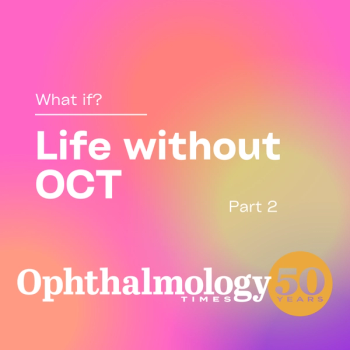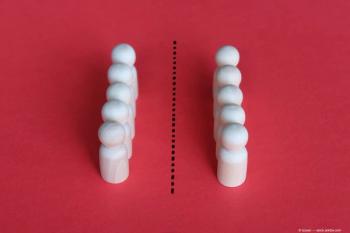
Vitamin A deficiency returns to an unsuspecting audience
Houston-Intestinal surgeries-such as gastric bypass, resections of the large and small bowel, and gallbladder removal-may interfere with the intestine's ability to absorb vitamin A, resulting in the potential for severe deficiencies and compromised vision.
Houston-Intestinal surgeries-such as gastric bypass, resections of the large and small bowel, and gallbladder removal-may interfere with the intestine's ability to absorb vitamin A, resulting in the potential for severe deficiencies and compromised vision.
Such visual deterioration can occur after as long as 18 years following the procedure, according to Rod Foroozan, MD, assistant professor of ophthalmology, Cullen Eye Institute, Baylor College of Medicine, Houston.
Dr. Foroozan said that although vitamin A deficiency is common in underdeveloped countries, it is occurring more frequently in developing countries because of malabsorption or abnormal metabolism resulting from the increasing popularity of gastric bypass surgery. Dr. Foroozan reported his findings in the British Journal of Ophthalmology (2006;90: 955-956).
Vitamin A deficiency in the eye can manifest in a number of ways, the authors pointed out-as conjunctival and corneal xerosis, keratomalacia, retinopathy, visual loss, and night blindness, the last of which is the earliest and most common symptom, he said.
Recent reports in the literature have identified more cases of vitamin A deficiency associated with intestinal bypass surgery. In light of this, the investigators conducted a 1-year retrospective review of patients with vitamin A deficiency in one neuro-ophthalmology practice. They identified three patients with vitamin A deficiency, all of whom had undergone intestinal bypass surgery more than 18 years ago before visual symptoms developed. A fourth patient also was identified, but was excluded because she developed visual symptoms several months after intestinal bypass surgery.
Case report
The following case report is an example of one of the three patients.
Patient 1, a 69-year-old man, presented with night blindness of 4 months' duration. Twenty years previously, he had undergone intestinal bypass surgery, and he had a history of hepatitis and possibly cirrhosis. The only ocular history was childhood strabismus, which required patching for 1 year. There was no family history of night blindness or retinal disease.
His best-corrected visual acuity was 20/60 in the right eye and 20/50 in the left eye. He was able to identify eight of 11 Ishihara pseudoisochromatic color plates with the right eye and 10 of 11 with the left eye. There was decreased sensitivity in a superior and inferior arcuate pattern bilaterally on Humphrey 24-2 automated perimetry.
Both pupils were briskly reactive, and there was no afferent pupillary defect. Slit-lamp examination showed a Bitot's spot in the left eye; funduscopic examination was normal, without evidence of drusen or white dots.
Laboratory studies showed deficiencies in vitamin A, with a retinol level of <0.06 mg/l (normal, 0.30 to 1.20 mg/l), a retinyl palmitate level of 0.00 mg/l (normal, 0.00 to 0.10 mg/l), and a retinol binding protein level of 1.0 mg/dl (normal, 3.0 to 6.0 mg/dl).
The patient received intramuscular injections of vitamin A that resulted in improved vision bilaterally during the first week after treatment. He did not return for another examination. An examination conducted by another ophthalmologist 1 week after vitamin A treatment indicated that the Bitot's spot had resolved.
In similar fashion, a second patient with visual deterioration because of vitamin A deficiency had improved vision shortly after treatment with a vitamin A injection. A third patient refused treatment with vitamin A.
Physician alert
The results of this study serve to alert physicians to a disorder that might otherwise go undetected.
Newsletter
Don’t miss out—get Ophthalmology Times updates on the latest clinical advancements and expert interviews, straight to your inbox.


















































.png)


